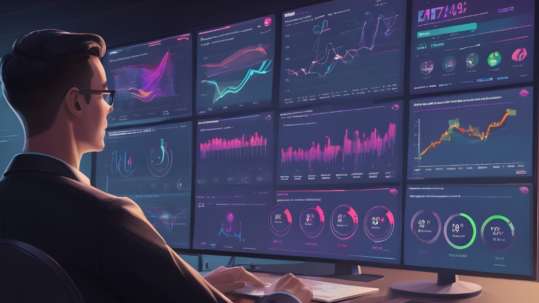
Maximizing Productivity with Workplace Analytics: A Deep Dive into Data-Driven Efficiency
In the ever-evolving landscape of the modern workplace, businesses are increasingly inclined towards data-driven solutions to enhance productivity and efficiency. Workplace analytics is emerging as a powerful tool, offering insights that enable organizations to make informed decisions and optimize their operations.
In this blog post, we’ll delve into workplace analytics, exploring its applications, benefits, and how organizations can leverage data to maximize productivity.
Improve your Workforce Efficiency with Workplace Analytics
Understanding Workplace Analytics
Workplace analytics involves data to gain insights into various aspects of employee behavior, collaboration, and overall organizational performance. Organizations can uncover patterns and trends that offer valuable insights by collecting and analyzing data from different sources, such as email communications, project management tools, and collaboration platforms.
Advantages of Using Analytics in the Workplace
Employee Productivity and Engagement
Workplace analytics can help measure employee productivity and engagement by tracking KPIs (Key Performance Indicators) such as task completion rates, time spent on specific activities, and collaboration patterns. This data allows organizations to identify high-performing teams and individuals requiring additional support or improvement.
Workplace Collaboration
Analyzing communication and collaboration patterns within teams provides valuable insights. By understanding how teams communicate and collaborate, organizations can foster better teamwork, streamline communication channels, and identify potential bottlenecks in workflow.
Workplace Design and Utilization
Workplace analytics can be used to optimize physical office spaces and online resources. By tracking the usage of different areas within the office, organizations can make informed decisions about workspace design, resource allocation, and facility management, ultimately creating a more beneficial environment for productivity.
Employee Well-Being
Monitoring work patterns and stress levels through analytics can contribute to employee well-being. Identifying burnout, high-stress periods, or prolonged periods of intense workload can help organizations implement strategies to support their employees and maintain a healthy work-life balance.
Benefits of Using Workplace Analytics
Data-Driven Decision Making
One of the primary benefits of workplace analytics is the ability to make informed, and data-driven decisions. Organizations can avoid gut feelings and intuitions, relying instead on robust data to guide their strategies and policies.
A recent study shows that the global Workforce Analytics market achieved a valuation of USD 1972.07 million in 2022, and it is poised for significant growth with an estimated CAGR of 16.58% throughout the forecast period, ultimately reaching USD 4951.15 million by 2028.

Identifying Efficiency Gaps
Workplace analytics can pinpoint areas where efficiency can be improved. Whether it’s optimizing workflow processes or identifying redundant tasks, organizations can make targeted improvements to enhance overall productivity.
Employee Performance Optimization
Understanding individual and team performance through analytics enables organizations to tailor training and development programs. By addressing specific needs, organizations can optimize the performance of their workforce.
Cost Reduction
Analyzing workplace data can lead to cost savings. By identifying underutilized resources and streamlining processes, organizations can cut unnecessary expenses and improve their bottom line.
Implementing Workplace Analytics Effectively
Clear Communication and Transparency
Before implementing workplace analytics, organizations must communicate transparently with employees about the purpose and goals of the initiative. Clear communication boosts trust and helps employees understand how analytics can benefit both the organization and individual contributors.
Data Privacy and Ethics
Respecting data privacy is crucial when implementing workplace analytics. Organizations must establish robust data protection policies, ensuring that employee privacy is safeguarded throughout the data collection and analysis process.
Continuous Feedback and Improvement
Workplace analytics should not be a one-time initiative. Regularly gathering feedback from employees and stakeholders helps organizations refine their analytics strategies, ensuring that the insights generated remain relevant and valuable over time.
Vultus Connect – Workforce Management Software
Vultus Connect’s Workforce Management software simplifies data to improve daily team efficiency. The tool helps you work closely with teams, using feedback and ongoing development to enhance performance.
A reliable employee management tool builds employee-friendly, healthy companies by applying data, human-centered design, and organizational behavior principles. With Vultus, organizations can make informed decisions for a more productive and positive workplace.
Wrapping Up
Workplace analytics represents a transformative approach to optimizing productivity and efficiency in the modern workplace. By utilizing the power of data, organizations can gain invaluable insights into employee behavior, collaboration patterns, and overall organizational performance.
From enhancing employee engagement to streamlining workflows and reducing costs, the applications and benefits of workplace analytics are huge. As organizations embrace this data-driven approach, they position themselves at the forefront of a new era in workplace management, where informed decision-making becomes the cornerstone of success.
To receive and stay updated about related content:





